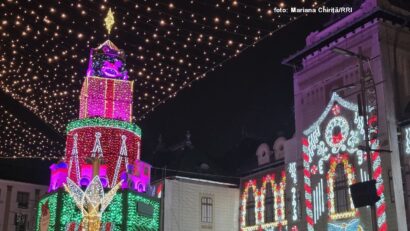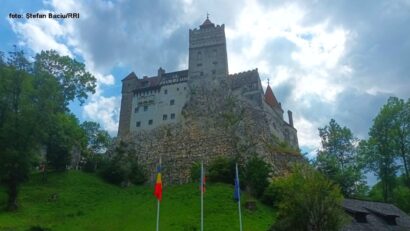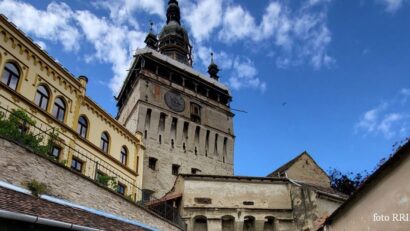Culture, history and spirituality in Bistrita county
The county of Bistriţa-Năsăud is located in the central-northern part of Romania covering the contact area of the Eastern Carpathians with the Transylvanian Plateau.

Daniel Onea, 26.05.2016, 13:54
The households of Bistriţa, located in the middle of green forests, the traditional villages and the beauty of nature are the main attractions for tourists from all over the world who come to visit the area. The county seat of Bistriţa-Năsăud is the city of Bistriţa, which was first mentioned in documents in 1264.
It is an old German burg and a valuable historical center. It is the place of origin of famous Romanian writers Rebreanu and Coşbuc and of Andrei Mureşanu, the author of Romanias national anthem. Around 1330, the Hungarian King Louis the Great was waging a war in this part of Transylvania against the Hungarian noblemen.
The Saxons from Bistriţa decided to fight on the kings side. After defeating the noblemen, King Louis the Great rewarded the Saxons by granting their town the title of free royal city, with the right to hold a big fair there such as that in Budapest. He also gave them the right to have their own seal, their own court and to put on the citys coat of arms the symbol of the Royal House of Anjou, as Hungarys King Louis the Great belonged to the French Royal House of Anjou.
The symbol consisted in an ostrich with a horseshoe in its beak. This symbol has been present on Bistriţas coat of arms for almost 700 years.Father Ioan Dambu, with the Năsăud Orthodox Archbishopric will next explain the importance of the village and the link between the school and the church.
Ioan Dambu: “The village is a center, a hearth. As long as peasants keep the customs and traditions alive, the values of the Romanian people and their spirituality will never die. There has been a long-lasting relationship between the school and the church, based on the awareness that they belong to each other. The church and the school are fundamental institutions of the Romanian people. In our county there are many religious denominations: Roman – Catholic, Greek – Catholic, the Reformed Church, Protestants, Evangelical Lutherans and other neo-Protestant denominations, but the Orthodox believers represent the majority.
Many cultural events are venued by the citys synagogue. It was built in 1856, being one of the most grandiose monuments of Bistriţa, as Gavril Ţărmure, the director of the County Culture Centre told us:
Gavril Ţărmure: “As in the past 50 years religious services have no longer been held in the synagogue due to the lack of 10 Jewish men in the community, the building has deteriorated. We have made an agreement with the Federation of the Jewish communities in Romania and have taken over the building, refurbished it and turned it into a cultural center. The synagogue in Bistriţa venues most of the citys cultural events. We have an event there almost daily. This space is best for chamber music as it had impeccable acoustics. We have mounted a stage and brought a Yamaha piano from Japan. Any musician that has once played in the Bistriţa synagogue wanted to come back. On the buildings balcony, we have arranged an art gallery. We could not extend the balcony, as the synagogue was built in the style specific to the Ashkenazi rite. The art gallery displays more than 700 paintings, graphical works, drawings, small sculptures, etc. There is no fee for using this space.






























